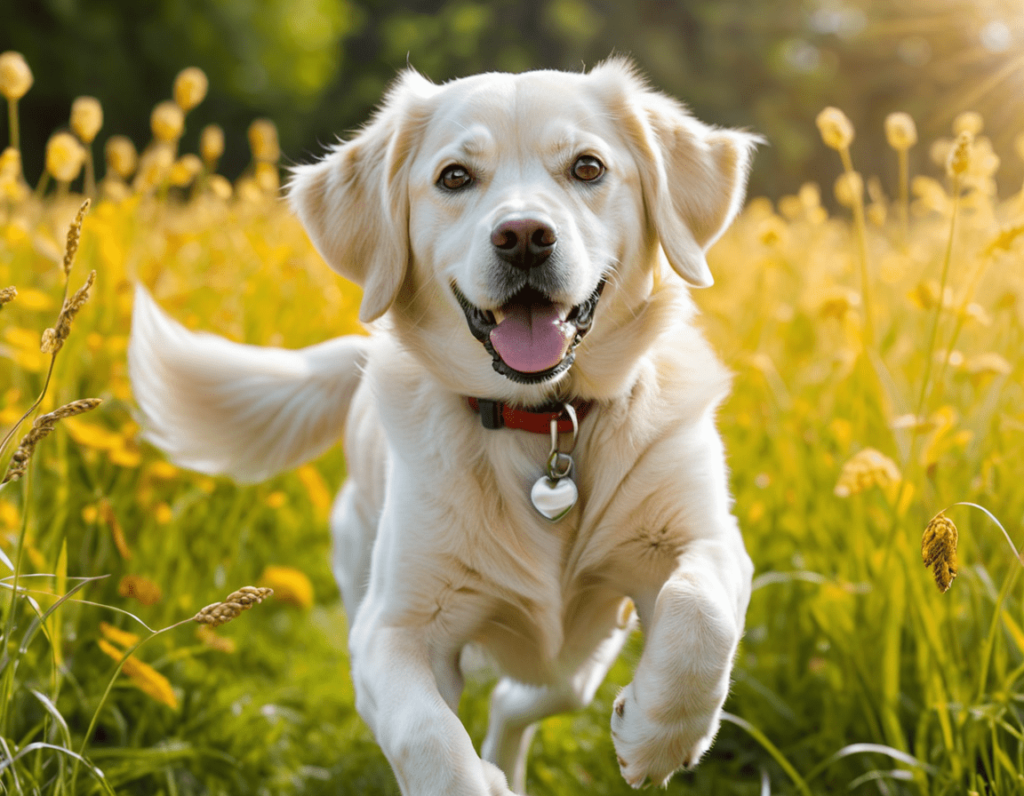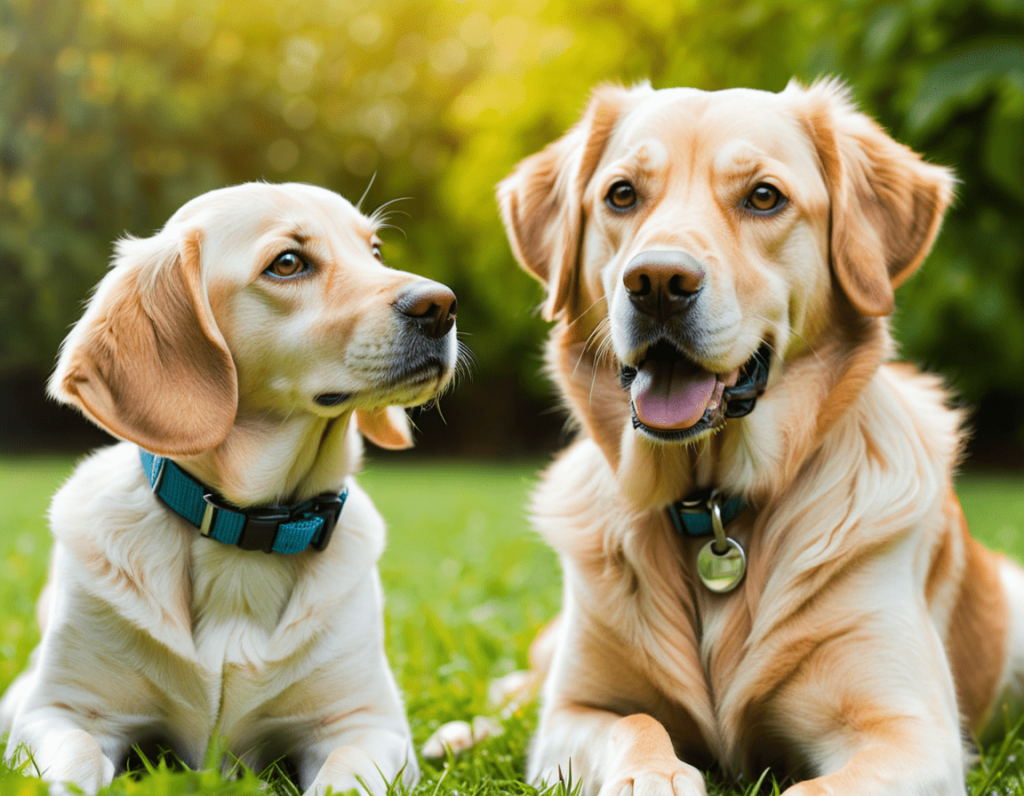
If you’re a dog lover (and who isn’t?), understanding your furry friend’s temperament is crucial to building a happy and harmonious relationship. Just like people, dogs come with their own personalities—some are social butterflies, while others prefer the quieter life of a couch potato. Let’s dive into the world of dog temperaments, sprinkle in some humour, and help you figure out what makes your pup tick!
What is Dog Temperament?
Dog temperament refers to the innate characteristics and behaviours that influence how a dog interacts with its environment, other animals, and humans. It’s like a personality blueprint that guides your dog’s reactions to various situations. Understanding these temperaments can help you cater to your dog’s needs, ensuring they live their best life. Plus, it might just save your favourite pair of shoes from becoming chew toys!
The Different Types of Dog Temperaments
1. The Friendly Extrovert
These dogs are the life of the party! Friendly extroverts are social, affectionate, and eager to meet new people and other dogs. They thrive on interaction and often make great therapy or service dogs. If your dog loves to greet guests with a wagging tail and slobbery kisses, you’ve got yourself a friendly extrovert!
Funny Fact: Friendly extroverts are basically the golden retrievers of the dog world. You can count on them to brighten anyone’s day—even if they occasionally mistake a stranger’s shoe for a toy!
2. The Independent Thinker
Independent thinkers are often more aloof and may prefer to do their own thing. They’re not necessarily anti-social; they just value their personal space. Breeds like Basenjis and Shiba Inus often fall into this category. If your dog seems to take their sweet time coming when called, don’t worry—they just have their own agenda!
Humorous Note: Independent thinkers are like the hipsters of the dog world—they enjoy being unique and are often misunderstood. If they could, they’d probably have a podcast about their “deep thoughts” on the meaning of life!
3. The Sensitive Soul
Sensitive dogs are in tune with their surroundings and can easily pick up on the emotions of their human companions. They may be shy or nervous in new situations and might need extra encouragement. Breeds like Greyhounds and some terriers can exhibit this temperament. If your dog seems to need a little extra love and support, they might just be a sensitive soul.
Laugh-Out-Loud Moment: Sensitive souls are the drama queens of the dog park. One slight against their pride (like a wrong glance from a poodle), and they’re ready to stage an exit worthy of a soap opera!
4. The Adventurous Explorer
Adventure-loving dogs are always up for a good time! They love to explore new places, try new activities, and meet new friends. Breeds like Border Collies and Labrador Retrievers thrive on adventure and require regular exercise to stay happy. If your dog is always dragging you toward the park or the nearest hiking trail, you’ve got an adventurous explorer on your hands!
Comedic Take: Adventurous explorers are like the daredevils of the dog world. They’d jump into a lake just to chase a squirrel if they could—because who doesn’t love a good splash?
5. The Laid-Back Couch Potato
Every dog owner knows this type. Laid-back couch potatoes are perfectly content to lounge around all day, enjoying the simple pleasures of life, like belly rubs and naps. Breeds like Bulldogs and Basset Hounds epitomise this temperament. If your dog thinks that the couch is the most luxurious throne in the house, congratulations—you’re living with a couch potato!
Funny Reality: Laid-back couch potatoes would probably apply for a “Netflix and chill” job if they could. Their ideal day? A cosy blanket, a bowl of kibble, and endless reruns of their favourite animal documentary.

How to Identify Your Dog’s Temperament
Identifying your dog’s temperament involves observing their behaviour in various situations. Here are some tips to help you determine your dog’s personality:
- Social Interactions: How does your dog behave around people and other animals? Are they friendly, shy, or overly excited?
- Response to New Situations: Pay attention to how your dog reacts to new environments, sounds, and experiences. Do they embrace the unknown or retreat into their shell?
- Play Style: Observe how your dog plays. Are they energetic and engaging, or prefer solo playtime with their toys?
- Training Reaction: How does your dog respond to commands and training? Are they eager to please, or do they need more motivation?
Why Understanding Temperament Matters
Understanding your dog’s temperament is essential for several reasons:
- Training Success: Tailoring your training approach to your dog’s temperament can improve success rates. For example, sensitive dogs may benefit from gentle training methods, while adventurous explorers thrive on interactive games.
- Socialisation: Knowing your dog’s temperament helps you introduce them to new experiences gradually, ensuring they feel safe and secure.
- Enrichment Activities: Each temperament has different needs for physical and mental stimulation. Providing appropriate activities will help keep your dog happy and healthy.
- Building a Strong Bond: Understanding your dog’s personality can strengthen your bond, leading to a more fulfilling relationship. A happy dog means a happy owner!
Bonus Tips for Living with Your Dog’s Temperament
Once you have a good understanding of your dog’s temperament, here are some bonus tips to help you create a harmonious living environment and strengthen your bond:
1. Tailor Your Training Approach
Different temperaments respond to training in various ways. For instance, friendly extroverts often thrive on positive reinforcement, while sensitive souls may require more patience and gentle encouragement. Use treats, praise, and playtime to motivate your dog, and always remember to celebrate small victories. If your dog does something right, don’t hold back on the happy dance—show them just how proud you are!
2. Create a Safe Space
For sensitive dogs or independent thinkers, having a safe space is vital. This could be a cozy corner with their bed or a crate where they can retreat when feeling overwhelmed. Make it their sanctuary—complete with toys and maybe a favourite blanket. Just like we all need a quiet moment after a long day, your dog will appreciate their own little slice of heaven.
3. Engage in Regular Exercise
For adventurous explorers and friendly extroverts, regular exercise is essential. Keep their minds and bodies active with daily walks, playtime, and trips to the dog park. Adventure doesn’t have to mean an intense hike; sometimes, a game of fetch in the backyard will suffice. Just watch out for the mud puddles—your adventurous pup might think they’ve found a new swimming hole!
4. Socialize Gradually
When socializing your dog, introduce them to new experiences slowly. Take them to pet-friendly cafes, dog parks, and community events, but always be mindful of their comfort level. If your dog prefers to observe from a distance, that’s perfectly okay! Respect their boundaries and let them approach new situations at their own pace.
5. Provide Mental Stimulation
Keeping your dog’s mind sharp is just as important as physical exercise. Puzzle toys, interactive feeders, and training games can help engage your dog mentally. You can even hide treats around the house and let them sniff them out. It’s like an Easter egg hunt but with fewer chocolate disasters—because we all know chocolate is a big no-no for dogs!
6. Be Patient and Observant
Every dog is unique, and their temperaments may change over time as they grow and experience new things. Be patient and observant of their behavior. If your dog seems stressed or anxious, try to pinpoint the source and address it. Understanding that your dog is a work in progress will help you adapt your approach and deepen your bond.
7. Celebrate Their Quirks
Every dog has their quirks, whether it’s how they greet you at the door, their obsession with chasing their tail, or their unique sleeping positions. Embrace these oddities—they’re part of what makes your dog special! Share funny stories about your dog with friends and family; laughter is a great way to bond with others and show off your amazing companion.
Conclusion
Understanding dog temperaments isn’t just about identifying traits; it’s about building a life together that celebrates your dog’s unique personality. With the right approach, you can create an environment where your dog feels safe, happy, and understood. Whether you have a friendly extrovert who loves the limelight or a laid-back couch potato who enjoys lazy afternoons, your bond with your furry friend will only grow stronger as you learn more about them.
So, take the time to appreciate your dog’s temperament, and remember to enjoy all the hilarious moments and heartwarming interactions along the way. With patience, love, and a little humour, you’ll create a wonderful life together—one wagging tail at a time!

Understanding Dog Temperaments: FAQs
As you embark on the journey of understanding your dog’s temperament, you may have a few questions. Here are some frequently asked questions (FAQs) that can help you navigate the wonderful world of dog personalities!
1. What factors influence a dog's temperament?
Answer: A dog’s temperament is influenced by several factors, including genetics, breed, early socialisation experiences, and individual personality traits. While breed tendencies can provide some insight into temperament, each dog is unique and may exhibit a mix of characteristics.
2. How can I determine my dog's temperament?
Answer: To determine your dog’s temperament, observe their behaviour in different situations, such as interactions with people and other dogs, responses to new environments, play styles, and reactions to training. Take note of their preferences and behaviours to help identify their temperament type.
3. Are some breeds more prone to specific temperaments?
Answer: Yes, certain breeds are generally known for specific temperament traits. For example, Labrador Retrievers and Golden Retrievers are often friendly and sociable, while breeds like the Shiba Inu may be more independent. However, individual dogs within any breed can vary widely, so it’s essential to assess each dog on their own merits.
4. How can I train a dog with a sensitive temperament?
Answer: Training a sensitive dog requires patience and positive reinforcement. Use gentle commands, avoid harsh discipline, and reward good behaviour with treats and praise. Create a calm and supportive environment for training sessions to help your dog feel safe and confident.
5. What should I do if my dog is anxious or fearful?
Answer: If your dog shows signs of anxiety or fear, it’s important to address these feelings with understanding. Create a safe space for your dog, expose them to new experiences gradually, and consider consulting a professional trainer or behaviourist for additional support. Remember, patience is key!
6. How can I help an adventurous dog release their energy?
Answer: Adventure-loving dogs need plenty of physical and mental stimulation. Engage them with regular exercise, such as walks, runs, or hikes, and provide interactive toys or puzzle games to challenge their minds. Consider enrolling them in agility classes or dog sports for an extra thrill!
7. Can a dog’s temperament change over time?
Answer: Yes, a dog’s temperament can evolve based on their experiences, training, and environment. Changes in routine, socialisation, or significant life events (like moving to a new home) can impact a dog’s behavior. Keeping an eye on your dog’s development and adjusting your care accordingly can help them thrive.
8. What is the best way to socialise my dog?
Answer: Socialisation should be a gradual and positive experience. Introduce your dog to new people, places, and other dogs at their own pace. Take them to dog parks, pet-friendly events, or even just around the neighborhood. Make each interaction positive by using treats and praise, helping your dog build confidence.
9. How can understanding my dog’s temperament improve our relationship?
Answer: Understanding your dog’s temperament allows you to tailor your training, socialisation, and activities to suit their needs. This strengthens your bond and leads to a happier, healthier relationship. When you meet your dog where they are, they’re more likely to feel safe and loved.
10. What should I do if I’m struggling to understand my dog’s temperament?
Answer: If you’re having trouble understanding your dog’s temperament, consider reaching out to a professional trainer or behaviorist. They can provide valuable insights and guidance tailored to your dog’s needs. Remember, every dog is unique, and seeking help is a sign of a committed and caring owner!
Conclusion
Understanding your dog’s temperament is an essential part of being a responsible pet owner. By recognising and respecting their unique personality traits, you can create a loving and supportive environment that fosters happiness and harmony in your home. Whether you’re navigating the quirks of a sensitive soul or enjoying the exuberance of an adventurous explorer, your bond with your furry friend will only grow stronger. Happy dog parenting! 🐾❤️


